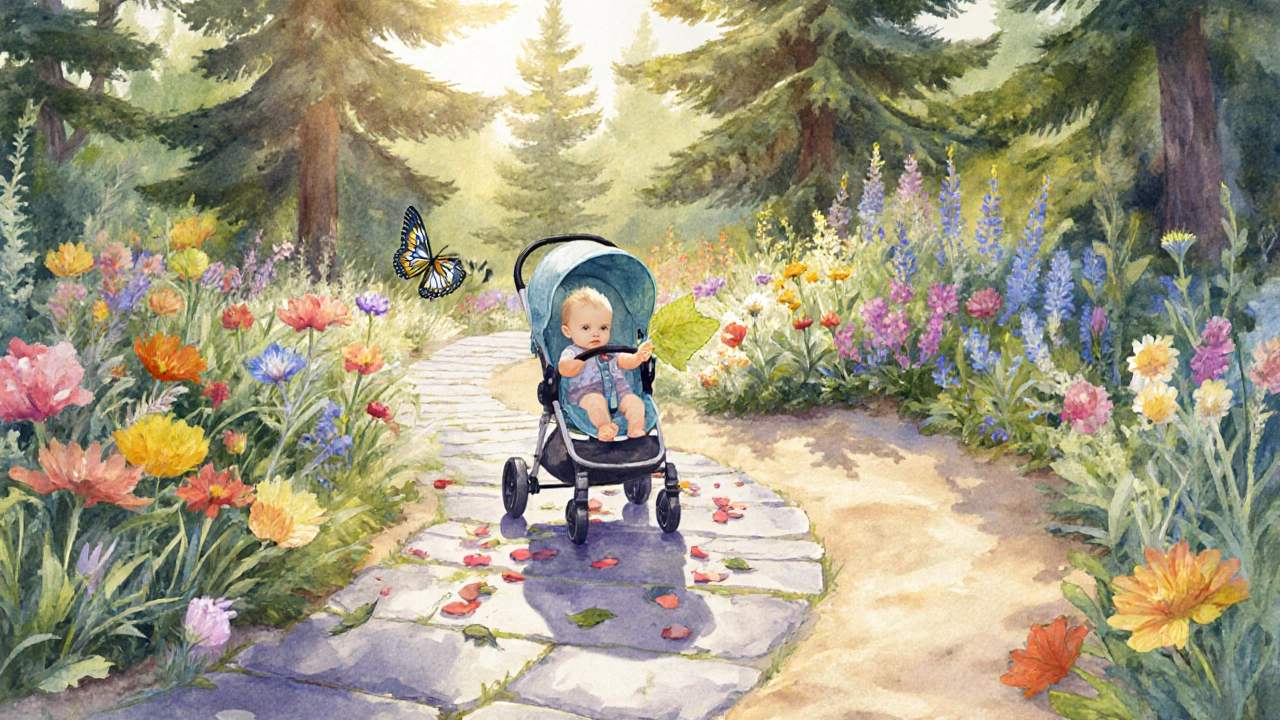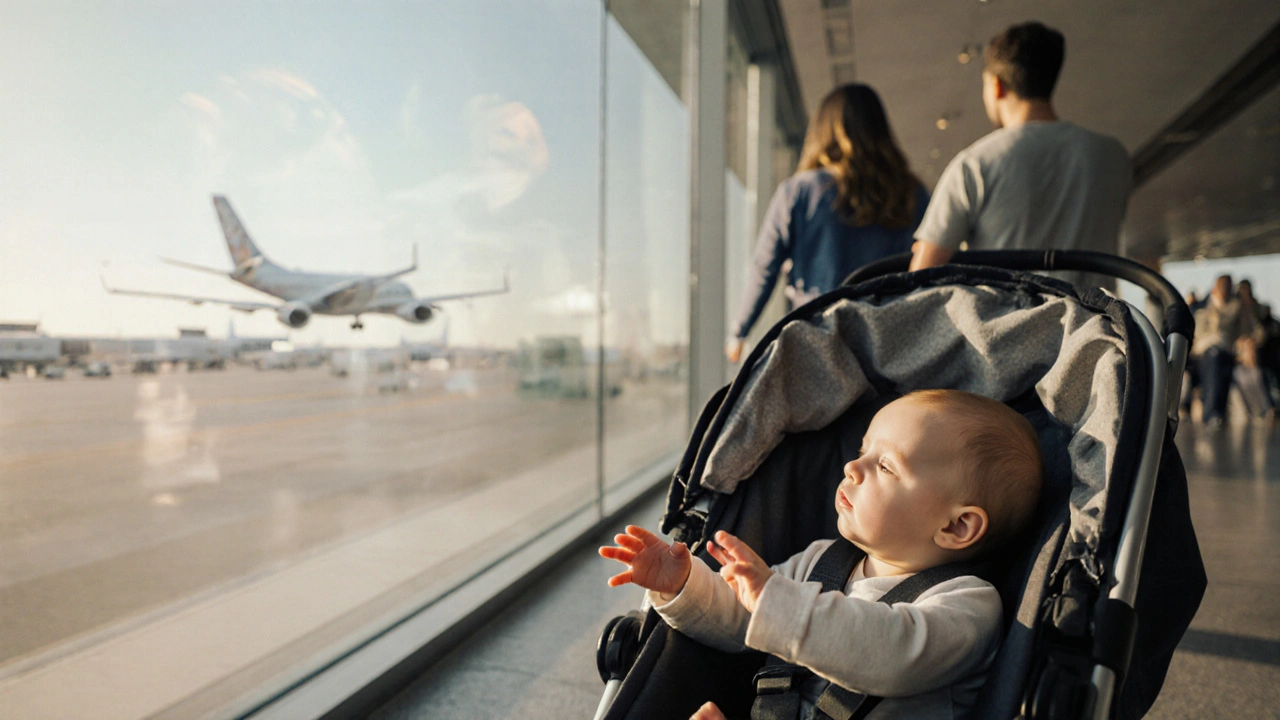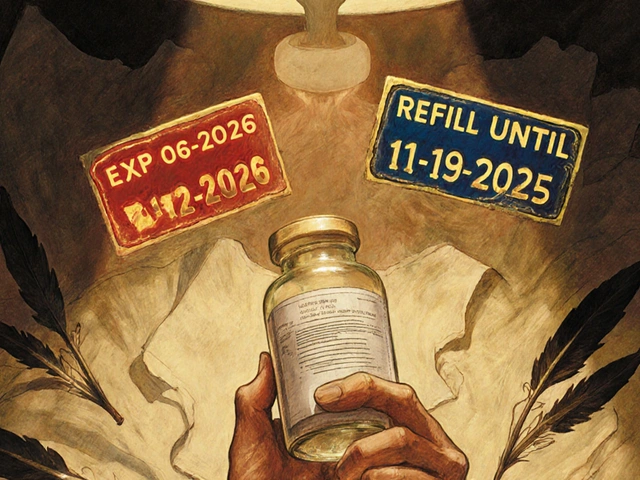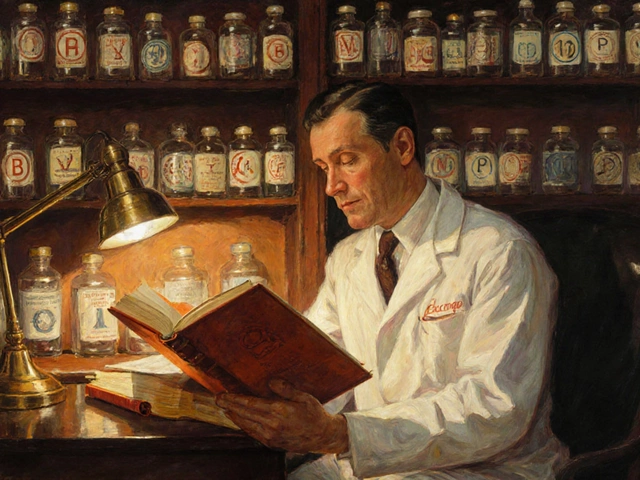Infant Travel Benefits Calculator
Developmental Benefits Summary
Cognitive Development
New environments stimulate neural pathway formation, enhancing memory and problem-solving skills.
Sensory Stimulation
Exposure to diverse sights, sounds, and textures promotes brain plasticity and sensory processing.
Parent-Child Bonding
Shared exploration builds trust and strengthens emotional connections between caregivers and infants.
Adventure Mindset
Early exposure to novelty fosters confidence, curiosity, and resilience in future experiences.
Ever wonder why a stroller‑filled airport can feel like a tiny launchpad for your baby’s curiosity? Travel in infancy isn’t just a cute photo‑op; it can spark a lifelong sense of adventure and lay solid groundwork for brain growth, emotional security, and family bonding.
Key Takeaways
- Even short trips expose infants to new sights, sounds, and textures that fire up neural pathways.
- Parent‑child bonding deepens when you navigate unfamiliar places together.
- Choosing safe, age‑appropriate destinations reduces stress and maximizes benefits.
- Mixing local day trips with occasional longer journeys provides a balanced “adventure diet.”
- Practical planning (packing, timing, health checks) turns potential chaos into a nurturing experience.
What "Travel in Infancy" Really Means
Travel in infancy is the practice of taking babies-usually under 12 months-on outings that go beyond the usual walk‑around‑the‑block routine. It can be a weekend road trip, a family visit to a nearby park, or a short flight to a relative’s town. The goal isn’t luxury; it’s exposure. When done thoughtfully, these trips become mini‑learning labs for the infant brain.
Why Early Adventures Matter for Development
Infant development covers the rapid physical, cognitive, and emotional growth that occurs from birth to the first year is astonishingly fast. Researchers note that by six months the brain has formed about 1,000 trillion synapses. New experiences act like fertilizer, strengthening the connections that matter most.
Cognitive Development Boost
Every new sound-whether it’s a distant train whistle or a bustling city market-adds a layer to an infant’s auditory map. Cognitive development refers to the emergence of thinking, problem‑solving, and memory skills thrives on variety. A 2023 study from the University of Auckland showed that babies who experienced at least three distinct environments per month displayed better object‑recognition scores at 12 months compared with home‑bound peers.
Sensory Stimulation
Travel is a sensory buffet. New textures (soft sand, cool tile), smells (sea breezes, fresh pine), and visual patterns (colorful street art, towering trees) all feed the sensory stimulation process by which the brain interprets input from the five senses system. This rich input encourages neuroplasticity-the brain’s ability to rewire itself-setting the stage for later language and motor skills.
Parent‑Child Bonding
When you navigate a new environment together, you’re not just exploring; you’re building trust. Parent‑child bonding describes the emotional connection that forms through shared experiences and responsive care becomes stronger when a parent calmly soothes a crying baby in a bustling train station or points out a bright butterfly during a park walk. The infant learns that the world is safe when the caregiver remains a steady anchor.
Fostering a Sense of Adventure
Adventure isn’t a trait you inherit; it’s a mindset you nurture. By repeatedly exposing babies to novelty, you lay the groundwork for confidence in the unknown. This early sense of adventure often translates to curiosity in school, willingness to try new activities, and resilience in adulthood.

Choosing the Right Trips: Safety First
Nothing ruins a good travel experience faster than a safety mishap. Travel safety encompasses the precautions taken to protect infants during outings, such as proper seating, health checks, and emergency planning should be your baseline checklist.
- Medical clearance: A quick pediatric check before long journeys ensures the baby’s vaccinations are up‑to‑date and identifies any travel‑related health concerns.
- Appropriate gear: Use infant‑rated car seats, airline‑approved carriers, and sun‑shades for strollers.
- Timing: Schedule trips during the baby’s usually calm periods (often mid‑morning after a feed) to reduce fussiness.
- Emergency kit: Pack a small bag with diapers, wipes, a change of clothes, any prescribed meds, and a basic first‑aid kit.
Types of Trips and Their Benefits
| Travel Type | Typical Duration | Key Benefits |
|---|---|---|
| Local Day Trip | 2‑6 hours | Quick sensory bursts, low stress, easy to repeat |
| Weekend Road Trip | 1‑2 days | Extended exposure to new landscapes, deeper bonding, routine adaptation |
| Short Flight (≤2h) | 3‑5 hours total (incl. airport time) | Sound & pressure changes promote auditory adaptation, introduces new cultures |
| Overnight Stay in a New City | 24‑48h | Extended cultural exposure, supports sleep‑pattern flexibility, builds resilience |
Practical Tips for Stress‑Free Infant Travel
- Pack Light, Pack Smart. Prioritize multi‑use items (e.g., a blanket that doubles as a nursing cover).
- Keep a Feeding Schedule. A well‑fed baby is a calmer baby. Bring enough formula or breast‑milk, and consider a portable cooler.
- Plan for Nap Times. Align travel segments with natural sleep windows; a moving car can be a great nap facilitator.
- Introduce New Items Early. Let the baby sniff a travel pillow or feel a new carrier a few days before the trip.
- Stay Flexible. If the baby shows signs of overstimulation, pause, cuddle, and reset before moving on.
Addressing Common Concerns
Many parents freeze at the thought of taking a newborn abroad. Here’s how to tackle the top worries:
- Will the baby get sick? Research the destination’s health advisories, ensure the infant’s vaccinations are current, and carry a pediatric‑approved travel health kit.
- Is the baby too young for a plane? Airlines generally allow travel from 2weeks old. A short flight with a good feeding schedule is usually fine.
- What about jet lag? For infants, keep the routine (feeding, sleeping) as close to home as possible. Use blackout shades and a white‑noise app to mimic familiar cues.
- Will the baby be uncomfortable in a carrier? Choose an ergonomically designed carrier that supports the hips in the “M‑position.” Test it at home first.
Long‑Term Impact: From Baby Steps to Adult Adventures
Early exposure to new environments can shape a child’s attitude toward risk, learning, and curiosity. A 2021 longitudinal study following 500 children from birth found that those who traveled with families at least three times before age two scored 12% higher on openness‑to‑experience scales at age 12.
In practical terms, this translates to kids who are more willing to try new foods, ask questions in class, and take on leadership roles in group projects. All of that stems from a simple family outing when they were still in diapers.
Putting It All Together: A Sample 4‑Week Adventure Plan
Below is a starter roadmap you can adapt to your schedule and location. The plan balances low‑key day trips with one longer weekend getaway.
- Week1 - Local Nature Walk: 30‑minute stroller walk in a nearby botanical garden. Focus on pointing out colors and sounds.
- Week2 - City Museum Visit: Choose a children’s museum with tactile exhibits. Use a baby carrier for hands‑free movement.
- Week3 - Weekend Road Trip: Drive to a coastal town (2‑hour drive). Stay in a family‑friendly Airbnb with a kitchen for easy feeding.
- Week4 - Short Flight: Fly to a neighboring city for a day‑trip to a zoo. Bring a portable white‑noise device to help the baby nap on the plane.
Feel free to swap destinations, adjust timing, or repeat favorite outings. The key is consistency-regularly stepping out of the home environment.
Frequently Asked Questions
How early can I start traveling with my baby?
Most pediatricians say it’s safe to start short outings after the first few weeks, provided the baby is healthy and you’ve cleared any travel‑related health concerns.
Do I need a special passport for an infant?
Yes, even babies need a passport for international travel. In most countries it’s a simple form‑fill and a small fee. Some destinations also require a notarized consent letter from the non‑traveling parent.
What’s the best way to keep my baby comfortable on a plane?
Feed during takeoff and landing to help equalize ear pressure, use a well‑ventilated carrier, and bring a familiar blanket or soft toy for reassurance.
Can frequent travel disrupt my baby’s sleep schedule?
If you maintain consistent nap cues-dark room, white‑noise, feeding schedule-most babies adjust quickly. A few extra naps may be needed after a long trip, but overall sleep quality remains stable.
Are there specific destinations that are better for infants?
Places with low pollution, easy stroller access, and family‑friendly amenities (e.g., parks, child‑care centers) work best. Coastal towns, quiet countryside farms, and well‑maintained museum spaces are popular choices.
Travel in infancy isn’t a luxury-it’s a powerful tool for shaping a curious, confident, and resilient person. By planning safely, keeping the trips age‑appropriate, and savoring the shared moments, you’re gifting your child a lifelong love of exploration.






Written by Martha Elena
I'm a pharmaceutical research writer focused on drug safety and pharmacology. I support formulary and pharmacovigilance teams with literature reviews and real‑world evidence analyses. In my off-hours, I write evidence-based articles on medication use, disease management, and dietary supplements. My goal is to turn complex research into clear, practical insights for everyday readers.
All posts: Martha Elena